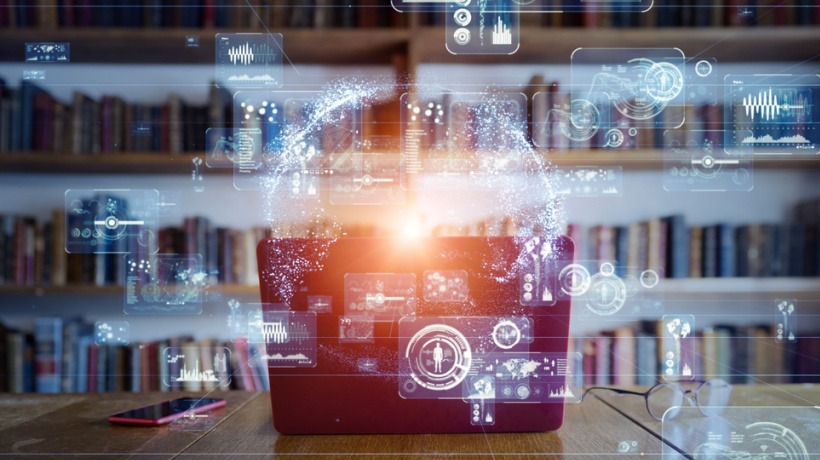Is AI The Path To Improved Learning Outcomes?
Artificial Intelligence (AI) has taken the world by storm, and this includes education in all its forms. Of course, this doesn’t mean that teachers and professors are being replaced by machines. In fact, AI can help educators hone their skills and should be their trusted companion, like an extra pair of hands, in their mission to offer learners the best experience possible. Enhancing learning outcomes is a necessity nowadays, as learners need to gain knowledge faster, understand complex concepts, sharpen their skills, and be prepared for whatever comes their way. AI can do exactly that: help students and their instructors make the most of their educational journey and participate in meaningful and relevant learning experiences. Below, we’ll take a look at seven ways that AI can boost learning outcomes and assist learners in achieving their goals.
7 Ways AI Helps To Unlock Learners' Potential
1. Personalized Learning Platforms
AI has made it possible to have a customized curriculum for each student, which was once just a dream. This is a game changer for those who may find the modules too slow or too fast. AI-powered personalized learning platforms analyze each student's strengths and weaknesses, as well as how they prefer to learn. Then, they present them with relevant content that can be adjusted along the way. For example, if someone gets the concept quickly, the system moves them to the next level. Similarly, if they're struggling, it'll give them extra resources until they're ready to move forward. Personalization doesn't stop there, though. The system also suggests learning materials based on how a student performs when presented with multimedia content. For instance, if someone learns better from videos, the system recommends courses based on that.
2. Intelligent Tutoring Systems
Speaking of personalization, AI has brought intelligent tutoring systems into the education game, too. These are like having a tutor dedicated to each student 24/7. They're not based solely on algorithms and patterns, like personalized learning platforms. They leverage Machine Learning (ML) and cognitive psychology and provide learners with personalized exercises, helping them to understand complex concepts. For instance, if a student can't grasp chemistry, the system will provide them with exercises that reflect the exact aspect they're struggling with. Even if they get to a satisfactory level, though, the system will challenge them further. The concept of these systems is to keep presenting learners with tougher exercises until they become experts at the subject they're studying. In addition, the system offers real-time feedback so that students always know their mistakes and can avoid repeating them.
3. AI-Based Gamification
Gamification has already gained ground in education, but what happens when it's AI-powered? Game-like elements in courses add a fun aspect to the learning process and motivate learners to perform at their best in order to receive high scores and rank first on leaderboards. Now, if we combine these elements with AI, learners get an even more personalized experience. The algorithms can analyze the participants' progress and all the badges, rewards, or rankings they have acquired. Then, they adapt the difficulty of the in-game challenges accordingly. Let's say you're learning a new language through an app with gamification elements. When the system identifies that you perform well, it will unlock the next level earlier and award you more points. Plus, it will deliver challenges that are similar to the ones you seem to score best at. For example, if you're good at timed vocabulary games, the system will present those more often than others.
4. VR/AR Applications
Imagine if learners could explore different worlds, travel through time, and get hands-on experience with difficult concepts without leaving the classroom. All these are possible with AI-powered Virtual Reality (VR) and Augmented Reality (AR) applications. These technologies immerse users in simulated environments and display them digitally in the real world, respectively. AI takes them a step further and adjusts the pace of these virtual lessons according to each student's needs. For instance, when learning about ancient Greece in history class, some students can stroll around ancient Athens during the Iron Age and others during the archaic era, depending on which part of history they've learned about during class. Similarly, in chemistry class, some students can do virtual experiments in VR labs, while others can explore elements of the periodic table with AR glasses.
5. Using Big Data
Big Data and AI have completely changed learning, even in traditional classroom settings. Apart from personalization, which we've already discussed, analyzing student data can be a huge help. We're not talking about attendance records or scores, but about how learners interact on learning platforms, how much time they spend in lessons, what they're clicking on, and many other aspects. Basically, it's data that can't be recorded without an educational app and is more easily analyzed with AI. When this data is analyzed on a large scale, educators can spot patterns in learner behavior, trends in the way they learn, and gain many more insights that can help them enhance the learning outcomes. For example, as a teacher, you can see which students are most likely to fail and prevent that. Similarly, you can find information like learners being good at physics but failing at arts, and other patterns that will help you adjust your teaching methods.
6. Enhancing Teacher Support
AI also helps teachers and educators by being their trusted assistant, available constantly. Apart from taking over administrative tasks like paperwork, scheduling classes, managing resources, and keeping track of learners' attendance, it also offers them tools to excel in their roles and be better at helping students achieve their learning goals. AI systems can grade learners' work and analyze the results to present teachers with patterns. So, if most of the class has failed algebra, then you may have to change the way you approach algebra lessons. However, if they've also performed badly in geometry or physics, maybe the problem is deeper and your students lean toward humanities classes. You can leverage those insights to curate learning content or use the available teaching resources recommended by your AI system. After all, if you become better at your role as an educator, then you'll also be better at enhancing your class's learning outcomes.
7. Special Education
Each learner is unique and has their own abilities and challenges. AI has proven to be an effective tool in special education, aiding learners with disabilities in enhancing their learning outcomes. It's not just about adjusting the lesson's pace or providing content that resonates with their interests. AI also helps with the creation of accessible content that learners can access through screen readers, videos with captions, audio descriptions, and other features. Assistive technologies have transformed a lot due to AI, too. Speech recognition software, for example, uses AI to recognize text and turn it into voice. Moreover, students with learning or cognitive disabilities can leverage AI-based predictive text tools for word suggestions and sentence completion, which allows them to express themselves more easily.
Conclusion
AI has the power to transform the way people learn, with more and more educational facilities, companies, schools, and colleges realizing this. Having a helping hand with lessons is ideal for both students and educators, and can lead to successful results in each individual's learning journey. By embracing everything that AI has to offer, you're making a commitment to work toward enhancing your students' learning outcomes and ensuring that everyone feels included. So, after weighing the pros and cons, you may opt to invest in AI learning tools to empower your learners.









